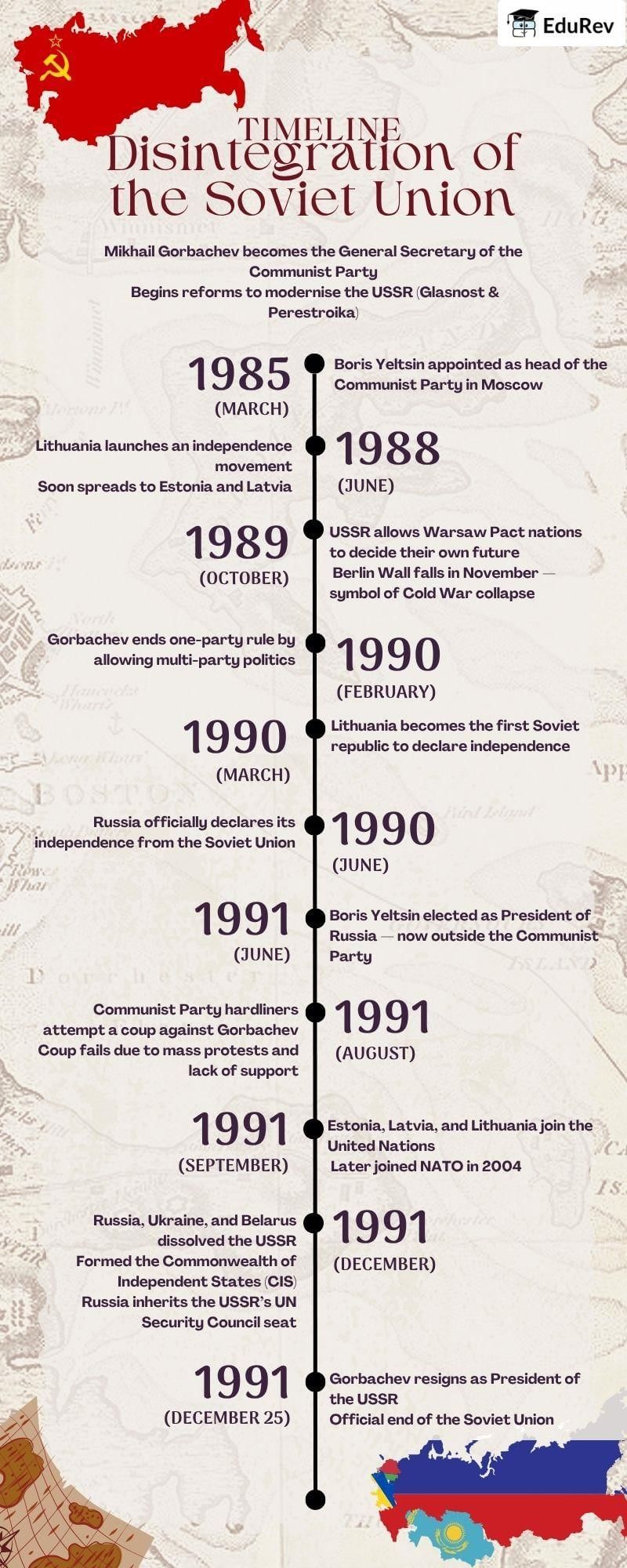Humanities/Arts Exam > Humanities/Arts Notes > Political Science Class 12 > Infographic: The End of Bipolarity
Infographic: The End of Bipolarity | Political Science Class 12 - Humanities/Arts PDF Download

The document Infographic: The End of Bipolarity | Political Science Class 12 - Humanities/Arts is a part of the Humanities/Arts Course Political Science Class 12.
All you need of Humanities/Arts at this link: Humanities/Arts
|
34 videos|308 docs|51 tests
|
FAQs on Infographic: The End of Bipolarity - Political Science Class 12 - Humanities/Arts
| 1. What is meant by the term "bipolarity" in the context of international relations? |  |
Ans. Bipolarity refers to a geopolitical situation where two major powers dominate global politics and influence international affairs. This concept is often exemplified by the Cold War era, which saw the United States and the Soviet Union as the two main superpowers, shaping alliances and conflicts around their respective ideologies.
| 2. How has the concept of bipolarity evolved over time? |  |
Ans. The concept of bipolarity has evolved from its peak during the Cold War to a more multipolar world in the modern era. After the collapse of the Soviet Union, the United States emerged as the sole superpower. However, the rise of other nations, such as China and the European Union, has led to a shift towards a multipolar world, diminishing the strict bipolar structure previously observed.
| 3. What are the implications of moving from a bipolar to a multipolar world? |  |
Ans. Moving from a bipolar to a multipolar world implies a more complex international landscape where multiple nations hold significant power. This can lead to increased cooperation among various countries, but it can also result in heightened competition and conflict as nations vie for influence and resources, impacting global stability and governance.
| 4. What role do non-state actors play in a multipolar world? |  |
Ans. Non-state actors, such as multinational corporations, international organizations, and non-governmental organizations (NGOs), play a crucial role in a multipolar world by influencing political, economic, and social issues. They can act independently of national governments and often address global challenges like climate change, human rights, and trade, thus affecting international relations and policymaking.
| 5. How can countries navigate the challenges of a multipolar world? |  |
Ans. Countries can navigate the challenges of a multipolar world by engaging in diplomacy, forming strategic alliances, and participating in international organizations. Collaborative efforts to address global issues, such as security, trade, and environmental concerns, can help build a stable international order and foster mutual understanding among diverse nations.
Related Searches
















